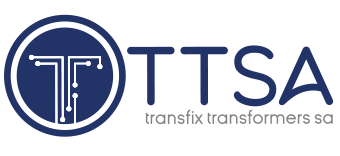South African private sector activity contracted in September as increased power cuts led to steep falls in output and new orders, a survey showed on Wednesday. S&P Global’s South Africa purchasing managers’ index (PMI) fell to 49.2 in September from 51.7 in August. Readings below 50 indicate a contraction in activity.
Kenya’s President William Ruto, who took office last month, urged Africa to embrace renewable energy, breaking ranks with continental peers that are pressing ahead with plans to develop natural gas resources. In order to boost energy generation from renewable sources and to adapt to a warming climate, Africa will need funding and technology from the rich world, Ruto said in an opinion piece in the UK’s Guardian newspaper on Tuesday. Unlike many African countries, Kenya already derives 92% of its energy from renewable sources and aims to increase that to 100% by 2030, Ruto said, referring to the country’s geothermal, wind and solar plants.
The South African Reserve Bank (SARB) said on Tuesday it estimates that scheduled power cuts implemented by utility Eskom will shave about one percentage point from 2022 economic growth. Electricity outages in Africa’s most industrialised nation have reached record levels this year as Eskom, saddled with unreliable coal-fired power stations, has struggled to meet demand.
Eskom CEO Andre de Ruyter said power cuts should start easing within the next 10 days when big generation units are expected to come back online. The state utility ramped up power rationing to 4 000 megawatts from 18:00 Tuesday until further notice due to generation trips at its Kendal and Lethabo plants and has imposed a record 120 days of blackouts so far in 2022.
Global carbon emissions from power plants may be headed for a record high this year after summer droughts and heatwaves boosted coal- and natural gas-fired generation.
The jump in fossil fuel use pushed emissions from electricity production up 1.7%, or 133-million tons, in the first eight months of this year, climate think-tank Ember said in a report Wednesday. Most of the increase was in July and August, as fossil generation was unchanged in the first half from a year earlier.
The board of applied energy research organisation the South African National Energy Development Institute (SANEDI) has appointed of Dr Zwanani Titus Mathe as CEO, with effect from October 1. Mathe has 18 years of experience to back a decorated academic record and his appointment will set the organisation in good stead to continue fulfilling its vital mandate, the organisation states.
The South Africa Wind Energy Association (SAWEA) has announced that the Wind Industry Internship Programme (WIIP) will be running for the second time next year, with applications now open. The WIIP first launched in January, when 15 interns where placed and mentored by SAWEA member organisations for 12 months. The WIIP internship offers hands-on experience to exceptional South African students who are committed to building a career in renewable wind energy. The purpose of the WIIP is to provide young professionals who have recently completed a degree – or those undertaking graduate programmes – with the opportunity to gain practical work experience in line with their studies and interests, and to expose them to work that is related to sustainable energy. SAWEA is encouraging young aspiring professionals to apply for 2023 internships. FOCUS AREAS
Mineral Resources and Energy Minister Gwede Mantashe on Tuesday warned that the need to transition to low-carbon energy sources sat “uncomfortably” with energy poverty in Africa. He did so in his keynote address at the Africa Oil Week 2022 conference in Cape Town. He pointed out that while Africa was under pressure to decarbonise fast, many people in Africa still had no access to electricity. And, even those who did have access, as in South Africa, now had to minimise their electricity consumption due to rising electricity costs. (He made a passing reference to loadshedding – scheduled power cuts or outages – in South Africa.)
To protect its customers from some of the impacts of load-shedding, the City of Cape Town has issued a tender that will see customers rewarded for reducing their power use at a given time so that city-supplied customers can be protected from the impacts of load-shedding. These Cape Town “power heroes” will be key in the city’s load-shedding protection efforts going forward, where a reduction in energy use of 60 MW is targeted.
A total of 56 wind and solar projects have been submitted by prospective bidders under the sixth bid window (BW6) of South Africa’s Renewable Energy Independent Power Producer Procurement Programme (REIPPPPP), which has been expanded to 4 200 MW from an initial allocation of 2 600 MW. The bids, which are split across five provinces, including 24 in the Western Cape province alone, have a combined capacity of more than 9 600 MW across 23 wind and 33 solar photovoltaic (PV) bids.
INDUSTRY NEWS
- NERSA appoints Electricity Market Advisory Forum to guide power-market reformDecember 19, 2025 - 2:04 pm
- Eskom offers more details on envisaged roles of the NTCSA and the TSODecember 18, 2025 - 11:04 am
- NTCSA says any electricity deal to salvage Mozal must ensure its financial sustainabilityDecember 17, 2025 - 3:01 pm
WHERE TO FIND US
Address
9 Yellow Street
Botshabelo Industrial Area
Botshabelo, Free State
Call / Email Us
Tel: +27 (0) 61 956 6772
Email: info@transfix.co.za
